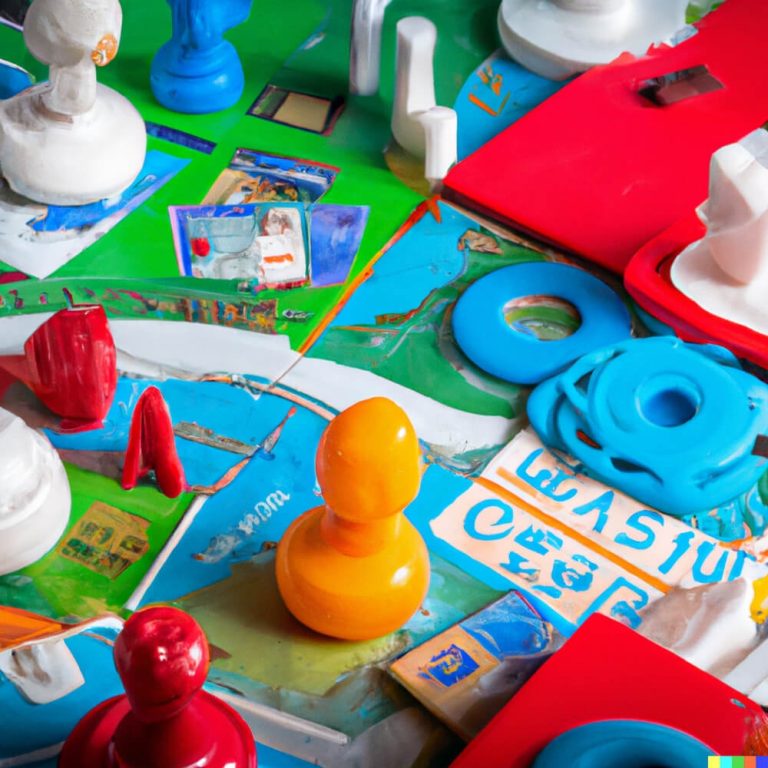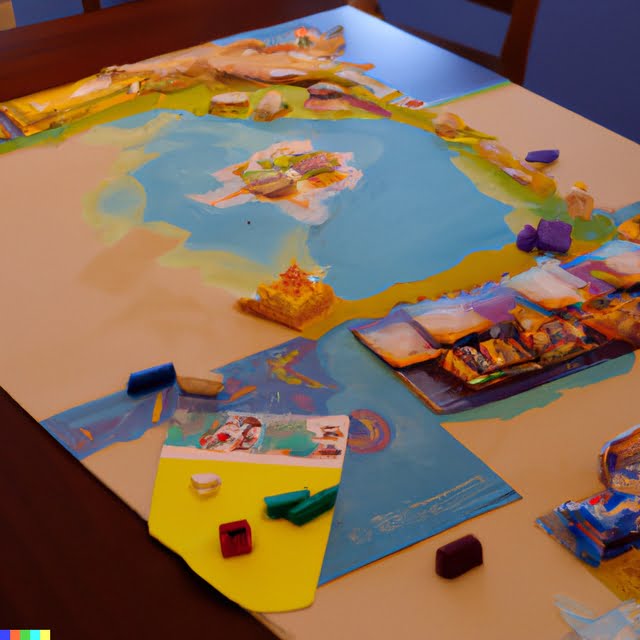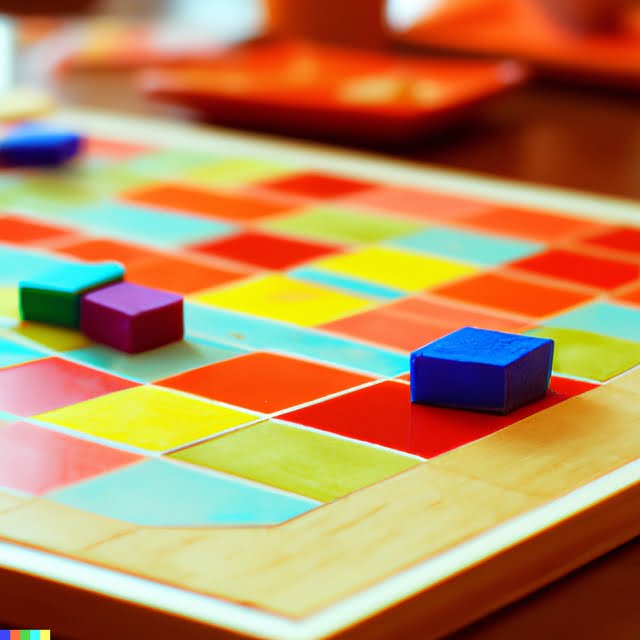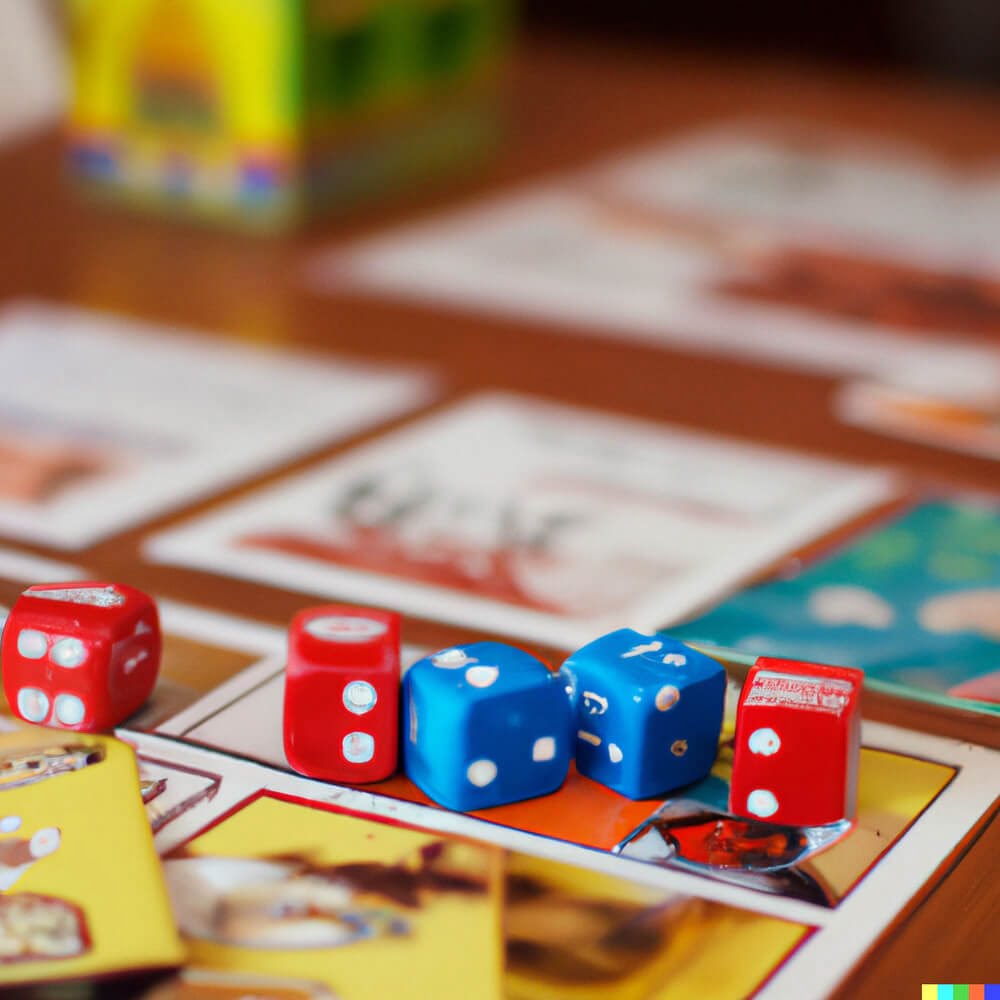Introduction
Being an entrepreneur in the board game business has many advantages. First, starting your own board game business offers financial rewards which can be quite significant. Board games have become increasingly popular and with the right marketing campaign, you may find that your games have sales numbers rivaling big-name competitors. Furthermore, there is a great deal of creativity that comes with designing board games that allows for immense artistic freedom. As a budding entrepreneur, it is likely you will bring something fun and unique to the market that engages and entertains customers while also providing a sense of fulfillment from creating something special. Additionally, having your own business gives you autonomy over your operations so you can develop products as you please without relying on other companies or external plans. All these benefits make running a board game business an exciting opportunity!
Understanding the Industry
Making and selling board games opens up an exciting new world of possibilities for budding entrepreneurs. To be successful in the board game industry, it is essential to understand the current market trends and identify opportunities. Researching what games are selling well can help entrepreneurs find a niche. By reading magazines, books and websites dedicated to board games, aspiring game designers can gain insight into what type of mechanics and themes are popular. Additionally, looking at platforms such as Tabletop Simulator or Board Game Arena can give innovators an indication of what mechanics work best on different types of platforms.
By understanding the key trends in the industry, entrepreneurs can create more informed decisions when designing their own game. For instance, they could determine which new aspects they could introduce to make their game stand out from others on the market; this could include creating interesting mechanics or developing fresh artwork. Furthermore, rather than trying to invent a completely unique idea from scratch, inspired entrepreneurs could take an existing concept but give it an extra twist to make it appeal to a different audience or possess some additional features that set it apart from other products on the market. Additionally, innovators could try crowdfunding platforms such as Kickstarter or Indiegogo not only to gain finance for their project but also test out prototypes and garner feedback before proceeding with producing large quantities of a product.
Finally, entrepreneurs should consider marketing strategies they wish to implement in order to have as much success with their game as possible. This implicates conducting keyword research by seeing which search terms have the highest bids on Google Adwords to determine what kind of content players will search; setting up social media accounts so that customers can stay updated regarding developments of new products; running contests or giveaways through those same profiles etc., all contribute towards the success rate of any product launch event. All these components form part of a strong marketing strategy that needs to be put in place in order for aspiring entrepreneurs to succeed when making and selling board games.
Creating Your Game
The first step in making and selling a board game is to have an idea. If you have a specific theme or storyline that you would like to include, start by brainstorming how the game could work with it. Think about how players will interact with each other and with the components of the game, such as cards, dice, board pieces, etc. Also consider whether there will be rewards or penalties associated with playing certain moves.
Once you have settled on a concept for your game, you can then work on developing the artwork for it. Determine what aesthetic you want to create and draw up sketches for characters and scenery that can be implemented into your game. Finally, begin writing out the rules which will determine how players play the game and provide instructions on any unique mechanics or elements unique to your game. Be sure to test out your rules multiple times and make adjustments if necessary.
Engineering Your Game
Making a board game isn’t as hard as you might think, but it does require some planning. Before beginning, it is important to consider what materials are needed to bring your vision to life. Gather these materials from craft and hardware stores or online. Create an assembly guide that clearly shows how the basic components should be assembled and includes step-by-step instructions for players. To make sure your game meets industry standards it is important to create an attractive package that is also durable enough to withstand multiple plays over time. Use strong material such as cardboard or thin wood for the components, such as pieces, boards or rule books. Include vibrant colours and graphic design elements when designing the artwork for your game box cover and the bottom of each component piece.
Next step comes with marketing your product after completion of the board game production stage – starting with building a website that contains more information about your board game (including background story, concept rules etc.) Additionally creating promotional material such as advertisements posters and flyers could help you spread the word out there quickly and efficiently. Don’t forget to contact local game stores in order to put your product up on their shelves; if they agree then it gives you an amazing opportunity of presenting collectively created games in one spot so keep looking out for fairs and conventions near you! Lastly an online store presence maybe necessary in order to sell more copies of your board game so if putting them up on eBay or Amazon fits well with your strategic plan then don’t hesitate doing just that!
Playtesting
Playtesting is a crucial part of creating a board game. It helps identify any issues or flaws in the gameplay, as well as find ways to improve it. Before selling your board game, it’s important to make sure that it’s enjoyable and fun to play. Playtesting involves playing the game with other people who may or may not be familiar with it so that they can provide honest and helpful feedback.
Finding testers can be tricky since you want people who are open-minded about unfamiliar games and have time for multiple playthroughs of your game. One great way to find testers is leveraging your existing social network; contact family, friends, local board gaming groups and other hobbyists who are interested in trying out new games. Another option is to look online for robust communities dedicated to testing such as BoardGameGeek or Shut Up & Sit Down. Additionally, if you attend events like conventions or meetups, you can often get helpful feedback from fellow gamers.
One common mistake in playtesting is being too close-minded or defensive about criticism. You should keep an open mind about potential changes that could improve your game on the whole; instead of disregarding negative feedback entirely, try to use it constructively by looking at it objectively and considering whether modifying certain aspects of the game would benefit everyone’s enjoyment more than keeping it exactly as-is. There might also be cases where some of the players didn’t understand the rules properly either due to unclear wording in rulebook or them misunderstanding some points; making changes such as cleaning up language in your rulebook before finalizing your design for sale can address these issues and lead to better play experience for everyone involved.
Pricing Model
When considering pricing your board games, the first step is to calculate costs. The cost of producing and shipping the game needs to be taken into account, as well as any external components like dice or figurines. This will form the basis for your cost calculation. Once you have established the cost of making and shipping your board game you can then determine how much profit you want to make from each sale. Add on factors such as taxes, packaging costs and bespoke game pieces to get a full pricing model.
Another important consideration when deciding how to price your board games is competition and market value. Research what other similar products are selling for and ensure that you are not attempting to overcharge customers who may otherwise be more willing to purchase a similar product elsewhere. You can also consider offering discounts through digital sales channels or create bundles with separate add-ons ” such as expansions packs, digital in-game currency or merchandise ” in order to help reach a wider audience whilst maximizing profits. Ultimately it’s up to you and realistic target goals, but remember that many potential buyers will base their purchasing decision on prices alone so make sure they are set correctly!
Building an Audience
Board game makers have a unique opportunity jump into an expanding market. With the surge in popularity of board games over recent years, there has been an influx of consumers interested in buying them. It can be difficult to stand out among this competition, however, so it’s important for board game makers to build a strong audience and engage with their potential customers.
One way to do this is by consistently promoting your game on social media and other digital channels, where potential customers are likely to see it. Utilize hashtags on platforms like Twitter and Instagram to create brand-specific conversations where people can follow along with everything related to you and your game. This can also help you identify influencers who might be interested in promoting your product as well. Additionally, join active gaming forums so that potential customers can learn more about your game from others who have already tried it or are looking forward to trying it when it releases. You should also create a blog and post frequent updates about production timelines or changes, which will make customers feel involved with the development process.
Finally, consider running contests or giveaways through these outlets where participants win advanced copies of the board game or even producer credits. This is a great way to reward loyal followers for engaging with your brand and generates positive reviews for our product once released ” reviews being one of the strongest drivers of sales these days. In sum, having an engaged community around you from the pre-launch phase will only boost the sales and recognition when you finally launch onto the market!
Distribution
Once you have created a board game, it is essential to figure out how to get the product into the hands of customers. Distributors are an important step to reaching potential buyers – they give you access to their network of retailers and can provide valuable insights into consumer trends and preferences. Choosing the right distributor is crucial to determining which stores will carry your board game, as well as finding the most cost-effective ways for your products to be shipped. Depending on where your target consumer lives, international shipping may be necessary. Researching different companies that specialize in international shipping and familiarizing yourself with Customs procedures can help save money and avoid delays getting your product overseas. Online marketplaces such as Amazon and Etsy also provide options for selling items online directly from a private seller’s account at competitive prices, eliminating the middlemen of a traditional distributor setup. Finally, if you want to reach people directly or expand on sales channels already established through distributors, tapping into social media marketing strategies can spread awareness quickly and cheaply. From creating unique hashtags that are used when sharing photos of your board game to utilizing influencer marketing campaigns to reach audiences in niche markets, digital marketing can take your sales further than ever before.
Customer Service
An important part of customer service when it comes to running a successful board game business is developing an effective policy for handling refunds and repairs. Before selling your products, make sure that you have clear and accurate return, refund and repair policies in place. Doing so will serve as a protection measure in the event of any issues with customer orders.
When creating your customer service policy, be sure to include guidelines related to how long customers have after purchase to submit returns or request repairs. Be sure to provide clear instructions on how such requests are handled and how customers can be notified on progress or findings from any inspections regarding faulty products or items that need repairs. An important part of this process involves providing customers with refund options if necessary, along with instructions on how this process should be approached by both parties throughout the duration of their order.
Another key detail that should not be overlooked is clarity regarding shipping fees associated with returning faulty items or making exchanges/repairs, as well as whether the company is responsible for covering such fees or not. Lastly, make sure you have a strict but fair timeline in place as a guideline for processing refunds and/or repairs. This timeline should include details on when customers can expect their money back (or new item received) along with conditions applicable if returning longer than stated timeline guidelines. Having objects like these in an established policy will help create an efficient resolution process between your business and its customers regarding doubtful situations caused by no fault of the buyer or seller.
Conclusion
With so much competition available from large companies, breaking into the board game industry is difficult. However, with hard work and dedication, it certainly isn’t impossible. Here are a few tips for succeeding as a board game entrepreneur:
1. Know Your Market: Research the competitive landscape to identify the needs of the current players and how you can address those needs with your own games.
2. Be Creative: Come up with innovative games that are entertaining and engaging or take an existing concept and make it better!
3. Think ‘Big Picture’: Focus on creating a strong brand identity and customer loyalty instead of short-term profits. This will set you apart from the competition
4. Don’t Be Afraid to Take Risks: Remember, no failure leads to no success”embrace risk taking and experimentation to test out new ideas and concepts for your games.
5. Promote Aggressively: Utilize all available marketing tools such as word-of-mouth advertising, social media campaigns, publicity stunts and promotional events”all of which help increase brand visibility and promote sales growth
6. Offer Multiple Ways To Purchase Your Games: Make sure you offer several options for buying your games including retail outlets, internet stores (such as Amazon), subscription services (for monthly game releases) or even through Kickstarter platforms to get backing for projects more quickly.
7. Malleable Design & Rules: Allow yourself some room to change any aspect of your games during production, in order to make sure they are in line with current trends within the market segment you target them towards
8. Reach Out For Help & Networking Opportunities: Seek assistance from experienced people within the industry who have valuable tips about promoting games in their own regions”that way you can gain insight into local markets that may be overlooked by big game companies
By following these tips, aspiring board game entrepreneurs should have a much better chance at gaining recognition in this increasingly crowded field”but don’t forget that ultimately it comes down to having passion for playing as well as making board games! Good luck!

I love playing all kinds of games – from classics like Monopoly to modern favourites like Ticket to Ride.
I created this blog as a way to share my love of board games with others, and provide information on the latest releases and news in the industry.





